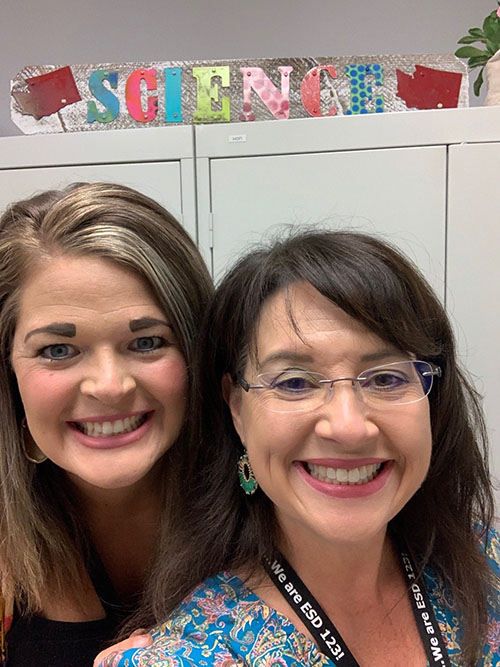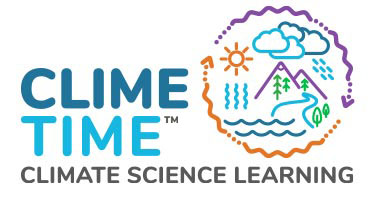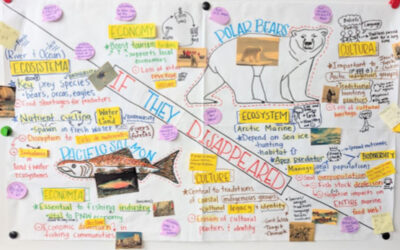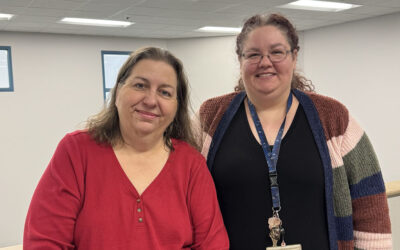How do you support students with Social Emotional Learning (SEL) and still teach content? You integrate!

Lindsey and Lorianne working on SEL Integration
Lorianne Donovan, ESD 123 Regional Science Coordinator and Lindsey Fangman, ESD 123 Regional Literacy Coordinator spent the summer working to solve this problem. They started by using the NGSS as a guide for how animal behaviors influence their need to be part of a pack, herd, or group. These behaviors support their social emotional and survival needs. Next they started integrating reading strategies that support comprehension in reading informational text. After determining some of the best strategies the coordinators set out to leverage those strategies to reinforce SEL Integration for students.
On August 16th, teachers from ESD123 Region joined together to discuss and consider how to integrate content with strategies that tend to SEL through immersive integrated lessons. When the training was over teachers had engaged in eleven strategies that, when used intentionally, supported the SEL, Science, and ELA content in an integrated approach.
The strategies that were highlighted were:
- Partner “I’m feeling because____”
- I used to think______ and now I’m considering__________.
- Cognitive Content Dictionary→ signal word
- Notice/Wonder
- Partner Talk
- Scientist Circle
- Reading Annotation (for evidence)
- Sentence Frames
- 4 Corners
- Choice Board
- Save the Last Word For Me
The next step was for teachers to start September using and trying some of these strategies in their science and ELA lessons, gather student voice, and reflect on the process at the end of the month. Then on Sept. 30th, teachers returned to share and collaborate on their successes, lessons learned, and plans for the rest of the year. One Special Education teacher said, “I have a much broader view of SEL in the Classroom…After taking this class, I still have a set Morning Meeting and time for direct instruction in the SEL curriculum. But now, I give the students more opportunities to engage with their peers in social learning activities across the curriculum.” A middle school teacher reflected by saying, “It can be difficult to ‘give up’ instructional time for SEL, but it has been worth it because it has made the instructional time more effective.”
Student voice was an important component of the training. Here is what a teacher gathered from her students…”My students loved the I’m Feeling. They told me they enjoyed it because we did it in small groups so they didn’t feel uncomfortable sharing.”
Lindsey Fangman, responded with, “Integration combined with SEL not only brings equitable learning to all of our students, but it shows our teachers the incredible things that can happen when we are intentional and purposeful.”
The course was such a success Lindsey and Lorianne are looking at a time when it can be offered again!




